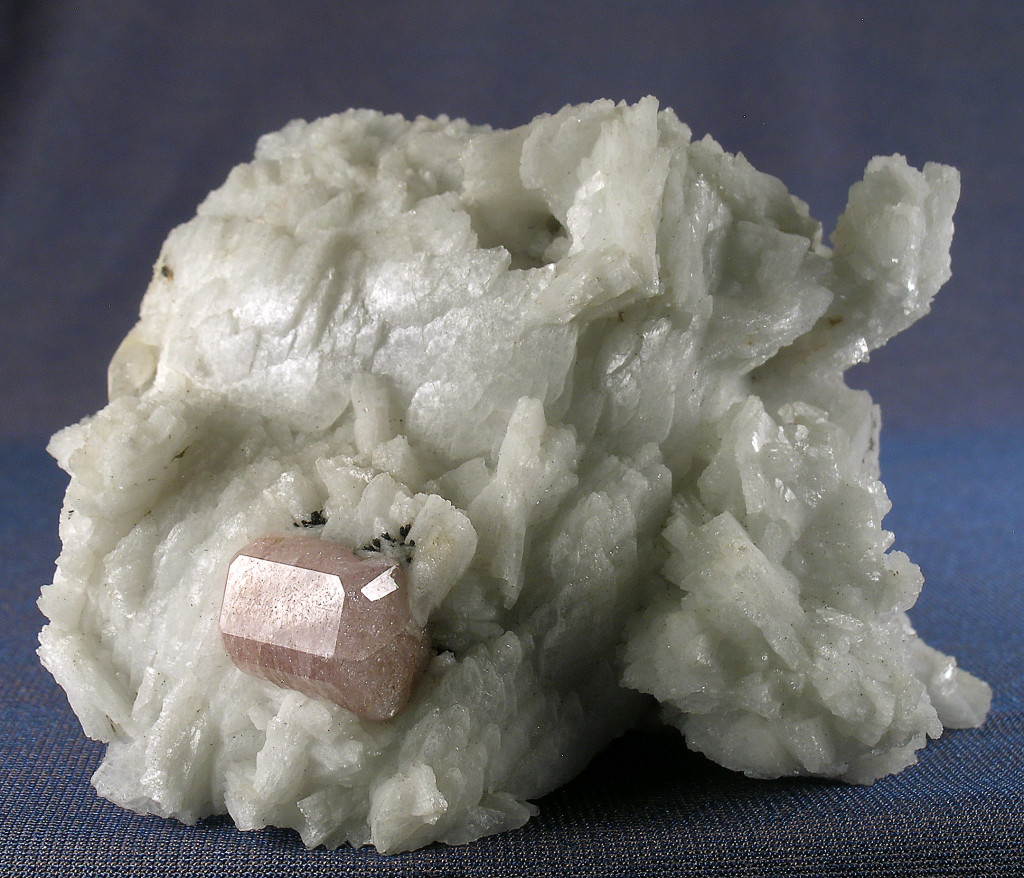Feldspars are important diagnostic minerals in identifying many rocks as well as distinguishing their composition without performing expensive chemical analysis. They occur as major rock forming minerals in the majority of igneous and metamorphic rocks on earth. Feldspars are used as paint fillers, pigments, pottery glazes, and an occasional ore of rare metals such as rubidium and cesium. Feldspars are framework silicates. They consist of aluminum, alkali metal, and alkaline earth metals suspended in a three dimensional lattice of silicate anions.
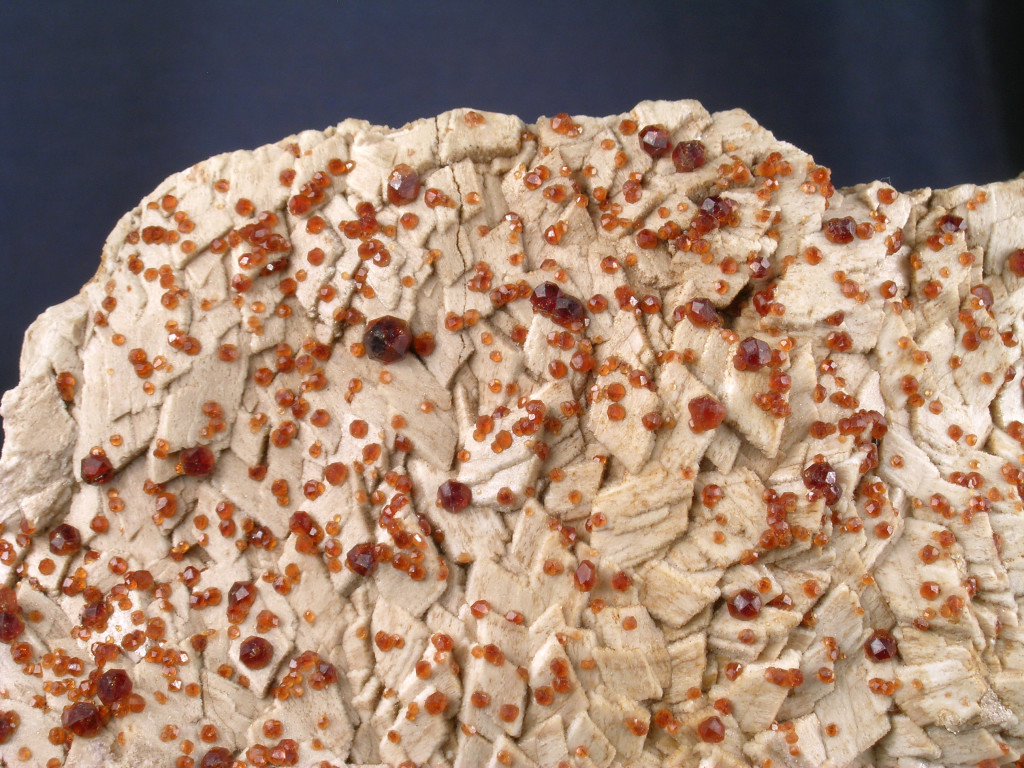
There are two main types of feldspars and a third, very rare type. The first and most significant type is the plagioclase feldspars, which can occur in nearly every igneous and metamorphic rock as a rock forming mineral. The plagioclases are represented by a binary solid solution series with sodium (albite or albitic) and calcium (anorthite or anorthitic) endmembers. Petrologists distinguish the position of a plagioclase along this series using two numbers- %Ab (percent albite) and %An (percent anorthite.) Plagioclases are triclinic and have a Moh’s hardness of 6 to 6 ½. The pure sodium feldspar, albite has the formula NaAlSi3O8 and the pure calcium endmember, anorthite has the formula CaAl2Si2O2. Albite and anorthite are usually colorless. In thin secion, they are highly polysynthetically twinned. 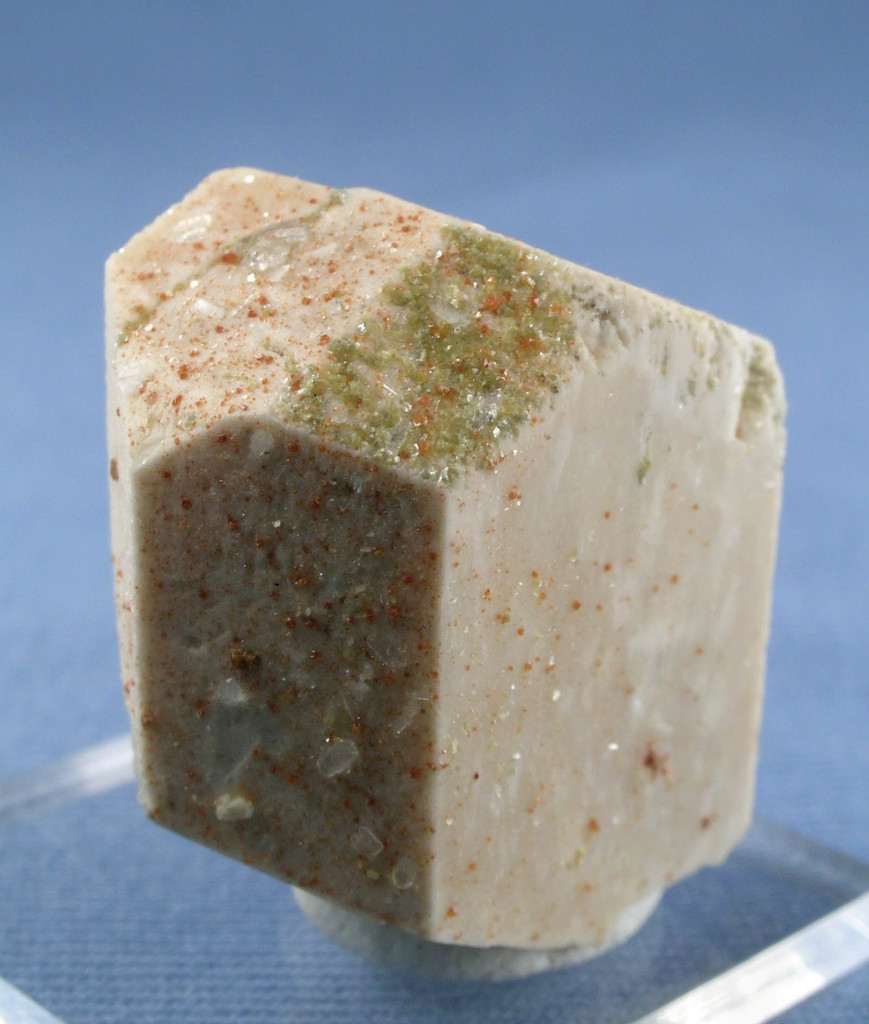 Plagioclases have perfect cleavage along the c-axis, good cleavage on the b-axis and imperfect on the plane extending between the a and b crystallographic axes. Increasing calcium content increases the cleavage on the b axis of the crystal. Labradorite, an intermediate member between albite and anorthite shows an interesting effect- the Schiller effect. When a piece is rotated in the light, it displays a shimmer of changing rainbow colors. This is due to the presence of thin, flat layers, or lamellae of pure albite and anorthite within the labradorite. These layers have differing refractive indices and act as a diffraction grating, producing the beautiful color shifting Schiller effect labradorite is famous for. Labradorite is a semiprecious stone and can be very expensive if it shows a rich Schiller effect. Some oligoclase (10-30%An plagioclase) exhibits a similar Schiller effect to labradorite but is orange or reddish rather than grey or bluish. This variety is known as sunstone and is semiprecious.
Plagioclases have perfect cleavage along the c-axis, good cleavage on the b-axis and imperfect on the plane extending between the a and b crystallographic axes. Increasing calcium content increases the cleavage on the b axis of the crystal. Labradorite, an intermediate member between albite and anorthite shows an interesting effect- the Schiller effect. When a piece is rotated in the light, it displays a shimmer of changing rainbow colors. This is due to the presence of thin, flat layers, or lamellae of pure albite and anorthite within the labradorite. These layers have differing refractive indices and act as a diffraction grating, producing the beautiful color shifting Schiller effect labradorite is famous for. Labradorite is a semiprecious stone and can be very expensive if it shows a rich Schiller effect. Some oligoclase (10-30%An plagioclase) exhibits a similar Schiller effect to labradorite but is orange or reddish rather than grey or bluish. This variety is known as sunstone and is semiprecious.
The second kind of feldspars are the alkali-feldspars. These include microcline (triclinic- KAlSi3O8), sanidine (monoclinic- (K,Na)AlSi3O8), anorthoclase (triclinic- (K,Na)AlSi3O8), and orthoclase (monoclinic- KAlSi3O8). As you can see by the chemistry, they are essentially polymorphs of each other with some various substitution of Na for K in certain members. The most popular members of this series in mineral collections are microcline and orthoclase. The other two are virtually unrepresented because they do not occur in attractive specimens abundantly. Microcline is among the most famous to mineral collectors for its blue-green variety, amazonite.
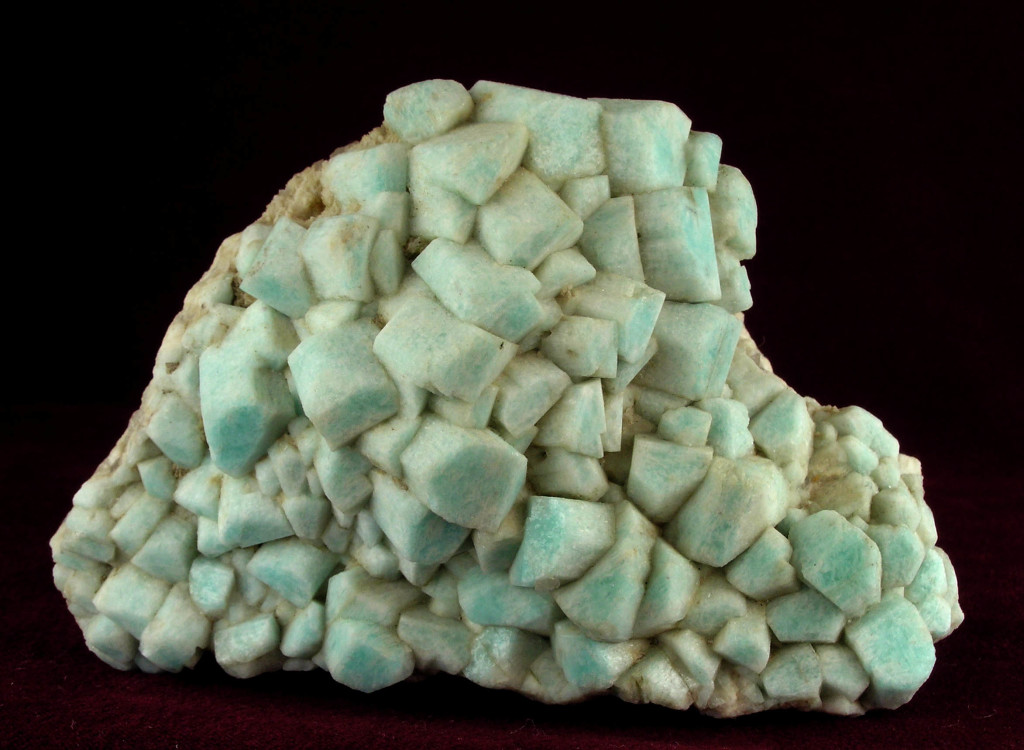
Amazonite is the most valuable of the feldspars and is colored by lead and possibly divalent iron, as reasearch in 2010 has suggested. Typically, amazonite is very pale blue in color but some localities can yield deeply colored examples. Anazonite is often treated by impregnating the surface with a paraffin wax. This brings out the blue color in otherwise weakly colored specimens by filling in etching in the surface. This is generally an accepted practice though it is always good to ask dealers if their amazonite specimens have been treated this way. This method can be tested by rubbing charcoal on the surface of the crystal and seeing if it easily smears off or becomes embedded in the surface. The second most popular variety of alkali feldspar among mineral collectors is adularia- a variety of orthoclase that forms white-cream to peach colored diamond shaped crystals. Specimens of this mineral variety are typically not very collectible unless they are very well crystallized or are from localities of significant pedigree such as the Swiss and Austrian alps. Potassium feldspars, especially microcline are often twinned. The twinning plane is parallel to the c-axis of the crystals. If the twinning plane is a mirror plane, the crystals are Baveno-law twinned. If the twinning plane is a mirror plane plus a 180 degree inversion plane, the crystals are Carlsbad twins.
Intergrowths of pink alkali feldspar with white plagioclase are common in pegmatites and some granites. This intergrowth is striped due to the orientation of the pink and white feldspars and has an uncanny resemblance to a slice of salmon fillet. Perthite has minor use as an ornamental stone but is very important for showing the immiscibility of the feldspars upon cooling from melt.
Barium feldspars are the third group of feldspars and are extremely rare. Usually they occur as microcrystals but some examples of celsian and hyalophane have been found in fine crystals. Specimens of hyalophane from an alpine style vein in Bosnia-Herzigovina make splendid gemmy specimens and can be good enough to facet. Hyalophane has also been found in marble hosted zinc oxide deposits such as those in Franklin, New Jersey.
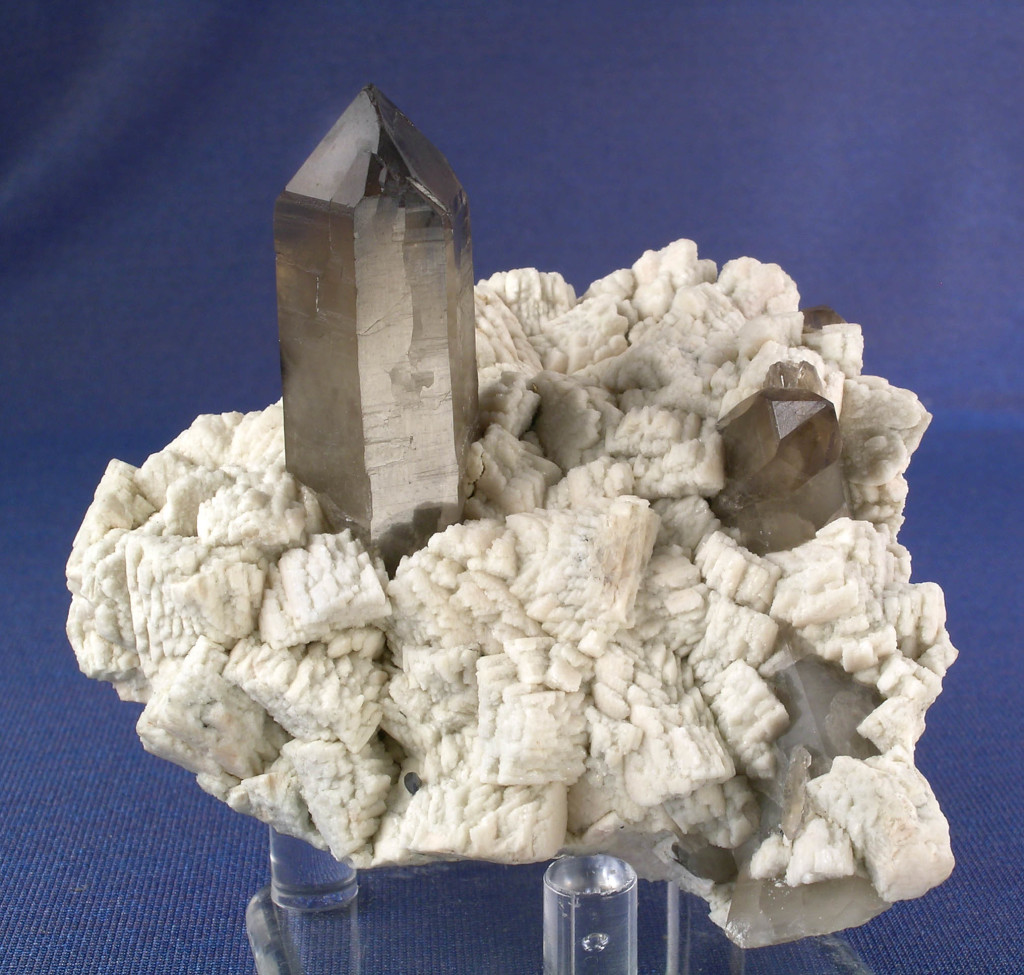 Feldspars have a variety of metaphysical properties. Microcline improves mental clarity and facilitates in cooperation with others. Microcline var. amazonite in addition to the properties of pure microcline is a soothing stone, connects the mind with the etherscape, and aligns the chakras. Labradorite is effective against depression and can give users perseverance. Labradorite can also help alleviate bone issues. In elixir form it can be a potent pain reliever. In general, feldspars are calming, relaxing, and aligning stones. They help us achieve mental balance and manage our emotions.
Feldspars have a variety of metaphysical properties. Microcline improves mental clarity and facilitates in cooperation with others. Microcline var. amazonite in addition to the properties of pure microcline is a soothing stone, connects the mind with the etherscape, and aligns the chakras. Labradorite is effective against depression and can give users perseverance. Labradorite can also help alleviate bone issues. In elixir form it can be a potent pain reliever. In general, feldspars are calming, relaxing, and aligning stones. They help us achieve mental balance and manage our emotions.

